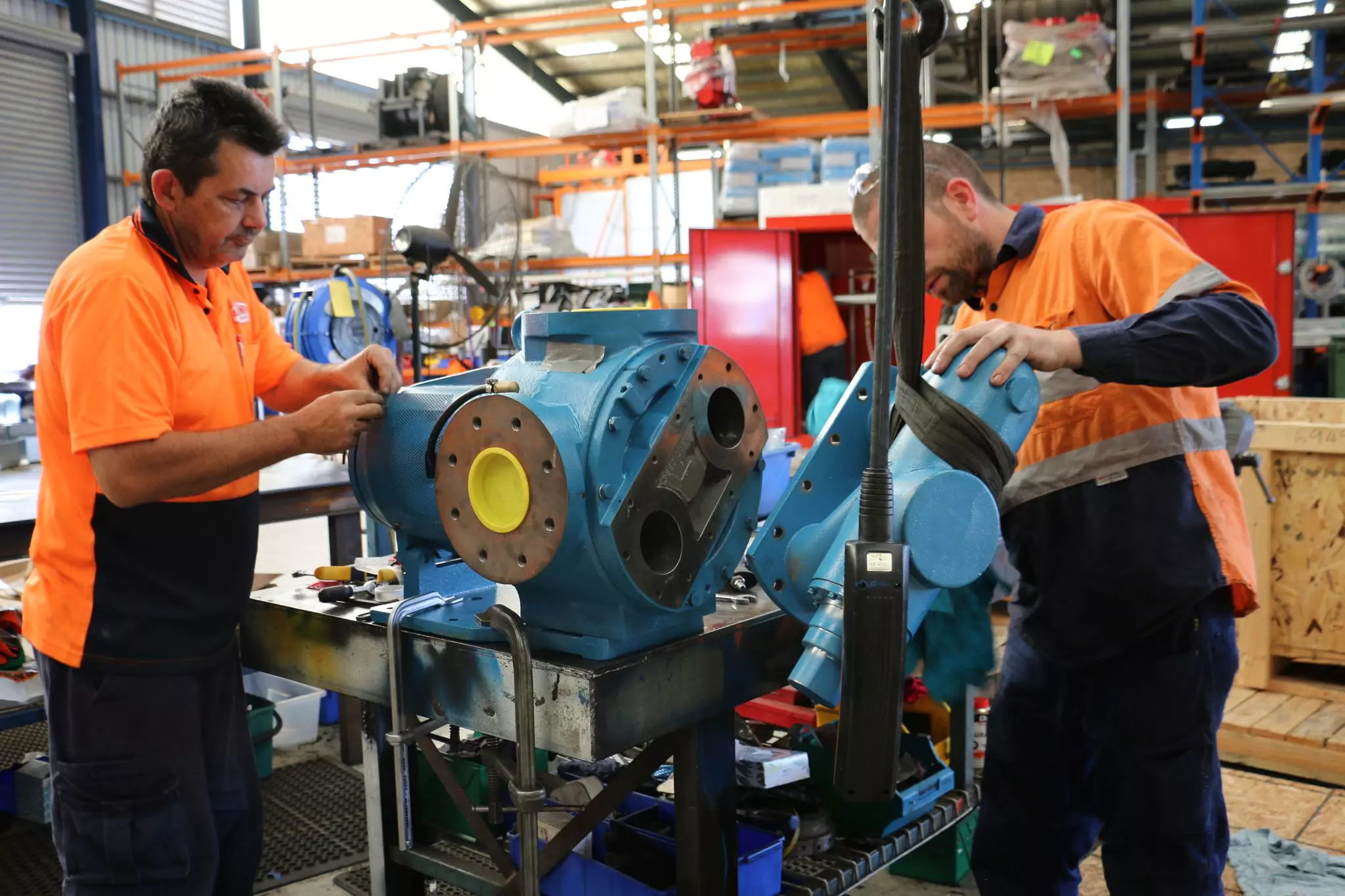
You’ll enjoy the All-Pumps experience. We’re certain.
Maintenance Capabilities
Maintenance Capabilities
Resources
A submersible pump is a specialty pump that comes with a hermetically sealed motor close-coupled to the pump body. The whole assembly is submerged in the fluid to be pumped. The main advantage of this type of pump is that it prevents pump cavitation, a problem associated with a high elevation difference between the pump and the fluid surface. Its main purpose is to push fluid from a low-lying source up to the surface.
One of the biggest benefits of having a pump completely submerged in a fluid is that it does not need to be primed. This makes submersible pumps more efficient than external pumps because water pressure assists in the movement of fluid into the pump, which requires less energy.
The most common type of submersible pump is a centrifugal pump that is powered by a hermetically sealed motor, designed to be fully submerged in the fluid it pumps. As a centrifugal pump, it operates by converting electrical energy into kinetic energy, which is then used to move the fluid through the pump and deliver it to the surface, reservoir, through the pipes, or other desired destination.